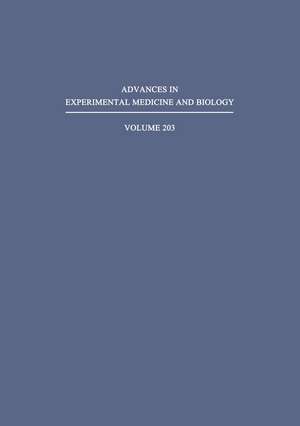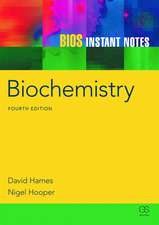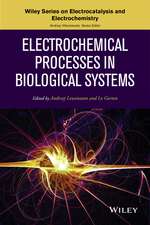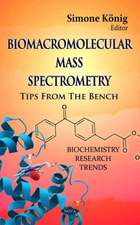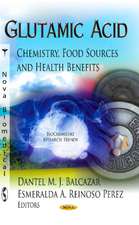Excitatory Amino Acids and Epilepsy: Advances in Experimental Medicine and Biology, cartea 203
Autor Robert Schwarcz, Yehezkel Ben-Arien Limba Engleză Paperback – 26 noi 2012
Din seria Advances in Experimental Medicine and Biology
- 9%
 Preț: 719.60 lei
Preț: 719.60 lei - 20%
 Preț: 691.93 lei
Preț: 691.93 lei - 5%
 Preț: 717.00 lei
Preț: 717.00 lei - 5%
 Preț: 716.28 lei
Preț: 716.28 lei - 5%
 Preț: 717.20 lei
Preț: 717.20 lei - 15%
 Preț: 640.24 lei
Preț: 640.24 lei - 5%
 Preț: 1113.83 lei
Preț: 1113.83 lei - 5%
 Preț: 715.71 lei
Preț: 715.71 lei - 5%
 Preț: 820.43 lei
Preț: 820.43 lei - 15%
 Preț: 641.38 lei
Preț: 641.38 lei - 5%
 Preț: 716.28 lei
Preț: 716.28 lei - 5%
 Preț: 523.99 lei
Preț: 523.99 lei - 5%
 Preț: 1031.00 lei
Preț: 1031.00 lei - 5%
 Preț: 717.00 lei
Preț: 717.00 lei - 5%
 Preț: 715.35 lei
Preț: 715.35 lei - 20%
 Preț: 1161.71 lei
Preț: 1161.71 lei - 5%
 Preț: 1170.51 lei
Preț: 1170.51 lei - 18%
 Preț: 1119.87 lei
Preț: 1119.87 lei - 5%
 Preț: 1288.48 lei
Preț: 1288.48 lei - 5%
 Preț: 1164.67 lei
Preț: 1164.67 lei - 5%
 Preț: 1101.73 lei
Preț: 1101.73 lei - 18%
 Preț: 1123.67 lei
Preț: 1123.67 lei - 5%
 Preț: 1435.64 lei
Preț: 1435.64 lei - 20%
 Preț: 1044.10 lei
Preț: 1044.10 lei - 18%
 Preț: 946.39 lei
Preț: 946.39 lei - 5%
 Preț: 292.57 lei
Preț: 292.57 lei - 18%
 Preț: 957.62 lei
Preț: 957.62 lei - 18%
 Preț: 1235.76 lei
Preț: 1235.76 lei - 5%
 Preț: 1231.55 lei
Preț: 1231.55 lei - 5%
 Preț: 1292.30 lei
Preț: 1292.30 lei - 5%
 Preț: 1102.10 lei
Preț: 1102.10 lei - 18%
 Preț: 1132.81 lei
Preț: 1132.81 lei - 5%
 Preț: 1165.19 lei
Preț: 1165.19 lei - 5%
 Preț: 1418.48 lei
Preț: 1418.48 lei - 5%
 Preț: 1305.63 lei
Preț: 1305.63 lei - 18%
 Preț: 1417.72 lei
Preț: 1417.72 lei - 18%
 Preț: 1412.99 lei
Preț: 1412.99 lei - 24%
 Preț: 806.16 lei
Preț: 806.16 lei - 18%
 Preț: 1243.29 lei
Preț: 1243.29 lei - 5%
 Preț: 1429.44 lei
Preț: 1429.44 lei - 5%
 Preț: 1618.70 lei
Preț: 1618.70 lei - 5%
 Preț: 1305.12 lei
Preț: 1305.12 lei - 18%
 Preț: 1124.92 lei
Preț: 1124.92 lei - 5%
 Preț: 1097.54 lei
Preț: 1097.54 lei - 15%
 Preț: 649.87 lei
Preț: 649.87 lei - 5%
 Preț: 1097.54 lei
Preț: 1097.54 lei - 18%
 Preț: 945.79 lei
Preț: 945.79 lei - 5%
 Preț: 1123.16 lei
Preț: 1123.16 lei
Preț: 424.91 lei
Nou
Puncte Express: 637
Preț estimativ în valută:
81.33€ • 88.37$ • 68.36£
81.33€ • 88.37$ • 68.36£
Carte tipărită la comandă
Livrare economică 21 aprilie-05 mai
Preluare comenzi: 021 569.72.76
Specificații
ISBN-13: 9781468479737
ISBN-10: 1468479733
Pagini: 752
Ilustrații: XI, 735 p.
Dimensiuni: 178 x 254 x 39 mm
Greutate: 1.28 kg
Ediția:Softcover reprint of the original 1st ed. 1986
Editura: Springer Us
Colecția Springer
Seria Advances in Experimental Medicine and Biology
Locul publicării:New York, NY, United States
ISBN-10: 1468479733
Pagini: 752
Ilustrații: XI, 735 p.
Dimensiuni: 178 x 254 x 39 mm
Greutate: 1.28 kg
Ediția:Softcover reprint of the original 1st ed. 1986
Editura: Springer Us
Colecția Springer
Seria Advances in Experimental Medicine and Biology
Locul publicării:New York, NY, United States
Public țintă
ResearchCuprins
Session I. The Limbic System: Neuroanatomical Concepts Relating to Epileptic Phenomena.- Amygdalohippocampal and Amygdalocortical Projections in the Primate Brain.- Subcortical Projections from the Amygdaloid Complex.- Cortical and Subcortical Afferents of the Amygdaloid Complex.- Putative Amino Acid Transmitters in the Amygdala.- A Survey of the Anatomy of the Hippocampal Formation, With Emphasis on the Septotemporal Organization of its Intrinsic and Extrinsic Connections.- Cytochemical Architecture of the Entorhinal Area.- Session I: Commentary.- Session II. Epileptic Brain Tissue: Neuropathology and Physiology in Animals and Man.- Neuronal and Glial Pathologies: Morphology and Physiology of Human and Monkey Epileptic Foci.- Metabolic, Morphologic and Electrophysiologic Profiles of Human Temporal Lobe Foci: An Attempt at Correlation.- Endogenous Excitotoxins as Possible Mediators of Ischemic and Hypoglycemic Brain Damage.- Role of the Substantia Nigra in the Kindling Model of Limbic Epilepsy.- Long Term Sequelae of Parenteral Administration of Kainic Acid.- Electrophysiology of Epileptic Tissue: What Pathologies are Epileptogenic?.- Session III. Excitatory Amino Acids and the Blood-Brain Barrier.- Pathophysiological Aspects of Blood-Brain Barrier Permeability in Epileptic Seizures.- Blood-Brain Barrier Permeability to Excitatory Amino Acids.- Limbic Seizures Induced by Systemically Applied Kainic Acid: How Much Kainic Acid Reaches the Brain?.- Extravasated Protein as a Cause of Limbic Seizure-Induced Brain Damage: An Evaluation Using Kainic Acid.- Ultrastructural Analysis of Rat Brain Tissue Following Systemic Kainate Administration.- Session III: Commentary.- Session IV. Excitatory Amino Acids: Receptor Interactions.- Anatomical Organization of Excitatory Amino AcidReceptors and their Properties.- Homocysteic Acid, an Endogenous Agonist of NMDA-Receptor: Release, Neuroactivity, and Localization.- Excitatory Amino Acid Pathways in the Brain.- Synthesis and Release of Amino Acid Transmitters.- Na+ Fluxes as a Tool to Identify Anticonvulsant Antagonists of Neuroexcitation.- Involvement of Excitatory Amino Acid Receptors in the Mechanisms Underlying Excitotoxic Phenomena.- Session IV: Commentary.- Session V. Excitatory Amino Acids and Seizures: Neurochemical Interrelationships.- Excitatory Amino Acid Antagonists as Novel Anticonvulsants.- The Hyperexcited Brain: Glutamic Acid Release and Failure of Inhibition.- Anti.-Excitotoxic Actions of Taurine in the Rat Hippocampus Studied In Vivo and In Vitro.- Alterations in Extracellular Amino Acids and Ca2+ Following Excitotoxin Administration and During Status Epilepticus.- Acidic Peptides in Brain: Do They Act at Putative Glutamatergic Synapses?.- Session V: Commentary.- Session VI. Mechanisms of Epileptogenesis.- Synaptic Events Underlying Spontaneous and Evoked Paroxysmal Discharges in Hippocampal Neurons.- Inward Currents in Cat Neocortical Neurons Studied In Vitro.- Synchronization of Pyramidal Cell Firing by Ephaptic Currents in Hippocampus In Situ.- Excitatory Amino Acids and Regenerative Activity in Cultured Neurons.- Long-Term Alterations in Amino Acid-Induced Ionic Conductances in Chronic Epilepsy.- Excitatory Amino Acids and Epilepsy-Induced Changes in Extracellular Space Size.- Session VI: Commentary.- Session VII. Excitatory Amino Acids: Physiological Studies.- Evidence for the Activation of the N-Methyl-D-Aspartate Receptor During Epileptiform Discharge.- Effects of Kainate on CA1 Hippocampal Neurons Recorded In Vitro.- Blockade by D-Aminophosphonovalerate or Mg2+ of ExcitatoryAmino Acid-Induced Responses on Spinal Motoneurons In Vitro.- The Membrane Action of Excitatory Amino Acids on Cultured Mouse Spinal Cord Neurons.- A Patch-Clamp Study of Excitatory Amino Acid Activated Channels.- Amino Acid Activated Receptor-Channels at Peripheral and Central Synapses.- Expression of Vertebrate Amino Acid Receptors in Xenopus Oocytes.- Session VII: Commentary.- Session VIII. Metal Ions and Epilepsy.- Transition Metal Ions in Epilepsy: An Overview.- Zinc-Binding Proteins in the Brain.- Neurobehavioral, Neuroendocrine and Neurochemical Effects of Zinc Supplementation in Rats.- Excitatory Amino Acids and Divalent Cations in the Kindling Model of Epilepsy.- Effect of Zinc on Neuronal Activity in the Rat Forebrain.- Relationship of Glutamic Acid and Zinc to Kindling of the Rat Amygdala: Afferent Transmitter Systems and Excitability in a Model of Epilepsy.- Session VIII: Commentary.- Session IX. Seizures and Brain Damage: The Excitotoxic Link.- Inciting Excitotoxic Cytocide Among Central Neurons.- Selective and Non-selective Seizure Related Brain Damage Produced by Kainic Acid.- On the Role of Seizure Activity and Endogenous Excitatory Amino Acids in Mediating Seizure-Associated Hippocampal Damage.- Kainic Acid Seizures and Neuronal Cell Death: Insights from Studies of Selective Lesions and Drugs.- Glutamate and Anoxic Neuronal Death In Vitro.- Quinolinic Acid: A Pathogen in Seizure Disorders?.- Session IX: Commentary.- Contributors.
